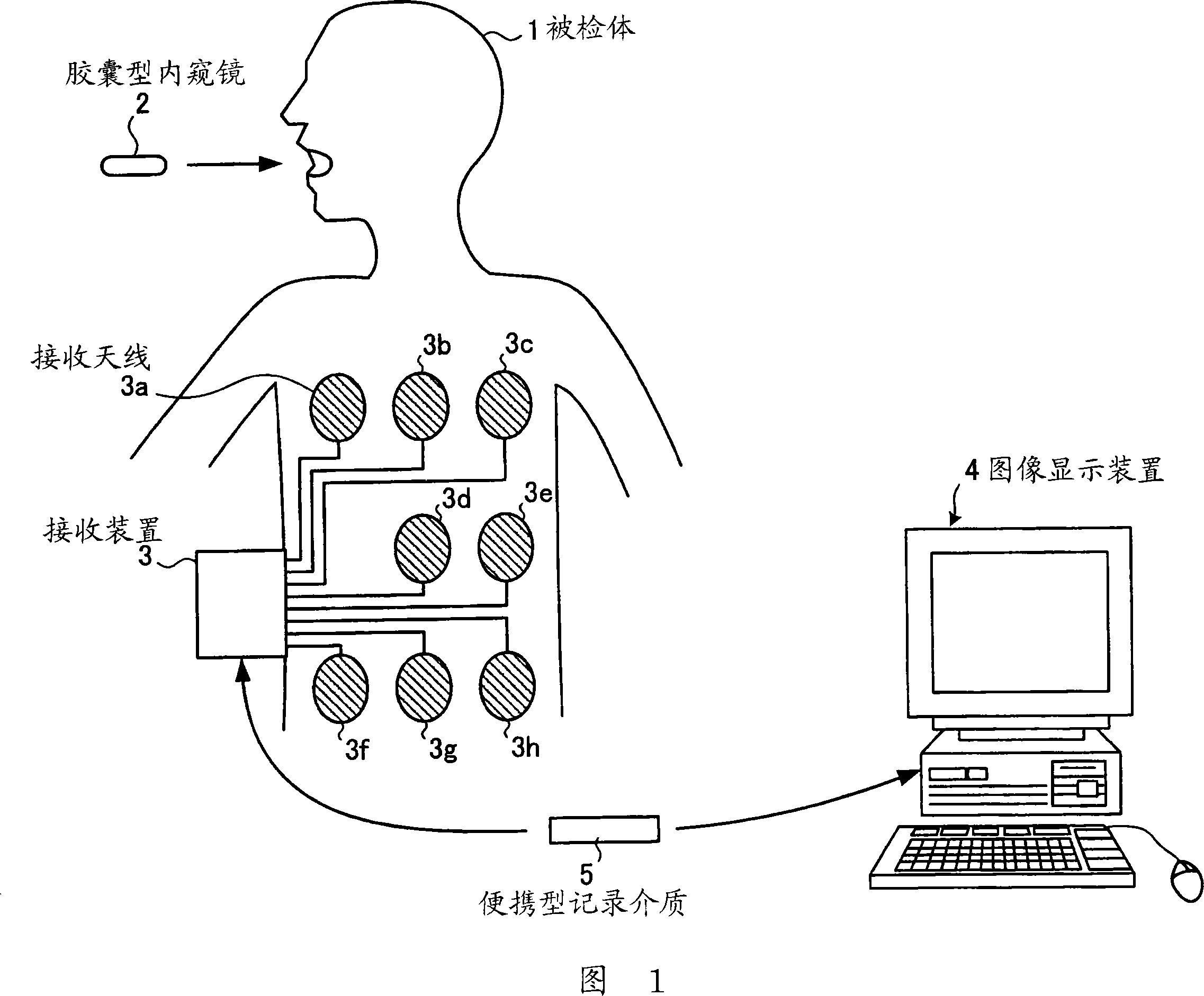Image display device
An image display device and image technology, applied in the fields of medical science, diagnosis, endoscopy, etc., can solve problems such as difficult to determine the bleeding image of the image group, difficult to understand the distribution of the number of bleeding images, etc.
- Summary
- Abstract
- Description
- Claims
- Application Information
AI Technical Summary
Problems solved by technology
Method used
Image
Examples
Embodiment approach 1
[0051] FIG. 1 is a schematic diagram illustrating a configuration example of an in-subject information acquisition system including an image display device according to Embodiment 1 of the present invention. As shown in FIG. 1 , the in-body information acquisition system related to Embodiment 1 of the present invention includes: a capsule endoscope 2 that captures images of the inside of a subject 1; The image inside the subject 1 taken by the scope 2; the image display device 4, which displays the image inside the subject 1 received by the receiving device 3; Data exchange with the image display device 4.
[0052] The capsule endoscope 2 is used to capture images inside the subject (specifically, internal images of organs). Such a capsule endoscope 2 has an imaging function of being introduced into the subject 1 to sequentially capture images of the subject 1 in time series, and a function of wirelessly transmitting the captured images of the subject 1 to the outside. The w...
Embodiment approach 2
[0110] Next, Embodiment 2 of the present invention will be described. In the first embodiment described above, one type of lesion image (for example, bleeding image) included in all in-vivo images AI is detected, but in this second embodiment, a plurality of lesion images included in all in-vivo images AI are detected, The lesion color of the slider 111 is set to a different color for each lesion represented by the above-mentioned plurality of lesion images. In addition, below, as various lesion images included in all in-vivo images AI, a hemorrhage image in which a bleeding site in the subject 1 is captured and a discoloration image in which a discoloration site in the subject 1 is captured are exemplified.
[0111] 7 is a block diagram schematically showing a configuration example of an image display device according to Embodiment 2 of the present invention. As shown in FIG. 7 , an image display device 24 according to the second embodiment includes a control unit 25 instead...
Embodiment approach 3
[0161] Next, Embodiment 3 of the present invention will be described. In the second embodiment described above, the various lesion images included in all the in-vivo images AI are detected, and the slider 111 is displayed in a lesion color different for each lesion represented by the various lesion images, but in this embodiment In mode 3, a desired lesion is further selected from the various lesions represented by the above-mentioned multiple lesion images, and the lesion mark corresponding to the selected desired lesion and the lesion color of the slider 111 are displayed.
[0162] FIG. 12 is a block diagram schematically showing a configuration example of an image display device according to Embodiment 3 of the present invention. As shown in FIG. 12 , an image display device 34 according to the third embodiment includes a control unit 35 instead of the control unit 25 of the image display device 24 according to the above-mentioned second embodiment. In the image display de...
PUM
 Login to View More
Login to View More Abstract
Description
Claims
Application Information
 Login to View More
Login to View More - R&D
- Intellectual Property
- Life Sciences
- Materials
- Tech Scout
- Unparalleled Data Quality
- Higher Quality Content
- 60% Fewer Hallucinations
Browse by: Latest US Patents, China's latest patents, Technical Efficacy Thesaurus, Application Domain, Technology Topic, Popular Technical Reports.
© 2025 PatSnap. All rights reserved.Legal|Privacy policy|Modern Slavery Act Transparency Statement|Sitemap|About US| Contact US: help@patsnap.com



